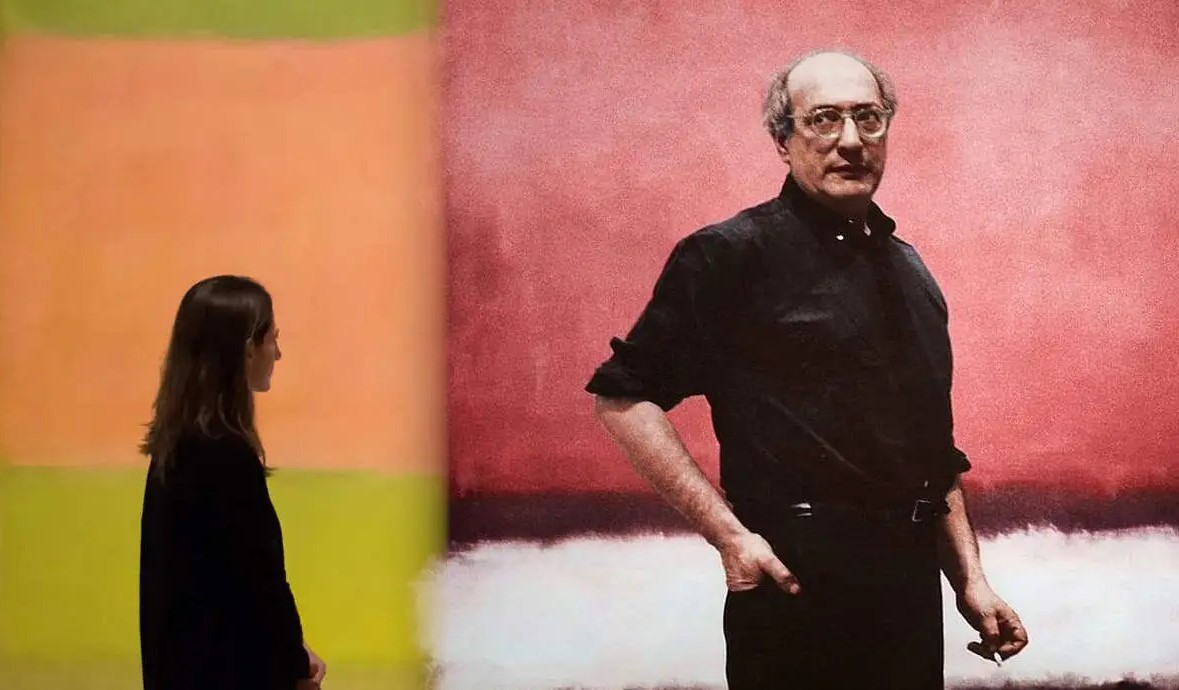The sensational painter of plain paintings sold for incredible prices: Who is Mark Rothko?
Rothko is the fourth child of a cultured Jewish family. He studied philosophy, mathematics, economics, English, biology, and physics at Yale University with a scholarship. After his scholarship ended, he even worked in the university laundry to continue his education.

Even before he received his diploma, his love of painting took him to New York, where he was most afraid of leaving in his life and where he would feel a different love for himself, and he started taking classes at the Art Student League school. This is where he begins to receive his real education in painting. Later, he becomes a member of the staff at this school. He started giving art lessons to children at Center Academy and continued this for many years. He opened his first painting exhibition in 1933, which included fifteen oil paintings, portraits, four watercolors, and three charcoal drawings.
After this, he also participated in an exhibition with famous painters such as Rothko, Jackson Pollock, and Adolph Gottlieb, who participated in many exhibitions. Rothko, who was gaining more and more fame, later worked as a lecturer at universities such as Brooklyn College, Tulane University, and Colorado University. He went on a European tour with his wife in his second marriage, Mell Beist, and his family, and this added more to Rothko. Towards the end of his life, Rothko left his family and started living in his studio. He no longer sees his family at all.
Mark Rothko (name not Anglicized until 1940; September 25, 1903 – February 25, 1970), was a Latvian-born American abstract painter. He is best known for his color field paintings that depicted irregular and painterly rectangular regions of color, which he produced from 1949 to 1970. Although Rothko did not personally subscribe to any one school, he is associated with the American abstract expressionism movement of modern art.
On February 25, 1970, Rothko's assistant Oliver Steindecker found him dead on the floor. According to the autopsy results, Rothko died from excessive blood loss due to cutting his arms. Unfortunately, his legacy led to a dispute and inheritance fight between his heirs Kate, Christopher, and Marlborough Gallery.
Rothko always talked about movement in his paintings. He was able to create a horizon line in each of his paintings and tried to highlight the dynamism of colors. He was always afraid of black and said he would destroy red one day.
The synchronization of individual time and universal time felt when one first encounters his paintings, and the gap that occurs between the two at the exact moment when these two are synchronized, allows you to reflect the thoughts in your mind onto the canvas, which, in my opinion, is what makes Rothko meditative. Between the determined color intensities, you bring what is in your subconscious and what is in your unconscious to the level of consciousness, because his paintings make the gap between these two times so clear and impossible to fill that you cannot help but climb the fish into the trees. pushes you to think and lyrical awareness; questions your limits. He wants to prove that humanity can still think and feel in the colorful spaces he creates, and this alone is reason enough to love Rothko...
Once upon a time, Rothko was asked to create a series of paintings for the walls of a restaurant. He did it, but at the last minute, he realized that he didn't want people to eat in front of his paintings. He sold the entire series to the Tate Gallery for a small price, with one condition. The works will be exhibited continuously in a single room with walls painted in a certain shade of grey, accompanied by dim lighting, and arranged accordingly. Thus, art lovers will be able to enter that room and meditate in their own way, experiencing a feeling similar to what Rothko had with his paintings.
This room is currently located in the landscape section on the second floor of Tate Modern.
